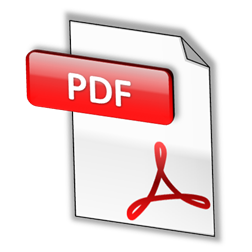
Mathematics
102660
2024-25
MASTER'S DEGREE IN ECONOMICS AND FINANCE
4
MANDATORY
Cuatrimestral
English
This course provides a complete and rigorous review of the main mathematical
methods used in economics.
More information: cemfi.es
G1 - Demonstrate solid knowledge of economic theory, and the relevant
economic, econometric and computational techniques.
G2 - Know how to apply the knowledge acquired and be able to use
problem-solving abilities in new or relatively unknown settings within wider
or multidisciplinary contexts related to economics and finance.
G3 - Integrate knowledge and tackle the complexity involved with making
judgements based on incomplete or limited information, and which includes
reflections on the social and ethical responsibilities tied to the application
of one's knowledge and judgement.
G4 - Critically analyse, assess and summarise new and complex ideas
related to empirical theories and methodologies in the field of economics.
ET1 - Rigorous and full knowledge of the main mathematical methods used in economics.
Type of activity
Hours
%In person
Theory classes
35
100
Practical classes
15
100
Study of the theory content of the course
40
0
Solve practical exercises
10
0
Theory classes
Exercises
Be aware of the main mathematical methods used in economics at graduate level.
Type
Minimum score
Maximum score
Exercises
0.05
0.3
Presentations
0.05
0.15
Exams
0.7
0.95
Academic schedule
Porfessor responsible for the subject
Monday through Friday, (9:30 - 13:00)
Basic Bibliography
Simon, C.P. and Blume, L. (2010) Mathematics for Economists. W.W.
Norton, New York.
Sydsaeter, K. and Hammond, P. (2006). Essential Mathematics for Economic
Analysis. Second Edition. Prentice Hall, Harlow, England.
Sydsaeter, K. and Hammond, P. (2005). Further Mathematics for Economic
Analysis. Prentice Hall, Harlow, England.
Recommended bibliography
Apostol, T.M. (1974). Mathematical Analysis. Second Edition.
Addison-Wesley, Reading, Massachusetts.
Binmore, K.G. (1983). Calculus. Cambridge University Press, Cambridge.
Burger, E.B. and Starbird, M. (2005). The Heart of Mathematics. An
invitation to e§ective thinking. Second Edition. Key College Publishing.
Emeryville, California.
De la Fuente, A. (2000). Mathematical Methods and Models for Economists.
Cambridge University Press. Gilbert, L. and Gilbert, J. (1995). College
Algebra with Trigonometry. McGraw-Hill,
New York. Haeussler, E.F. and Paul, R.S. (1996). Introductory
Mathematical Analysis for Business, Economics, and the Life and Social
Sciences. Eighth Edition. Prentice Hall, Upper Saddle River, New Jersey.
Jacques, I. (1999). Mathematics for Economics and Business. Third
Edition. Prentice Hall, Harlow, England.
Klein, M.W. (1988). Mathematical Methods for Economics. Addison-Wesley,
Reading, Massachusetts.
Mas-Colell, A., Whinston, M.D., and Green, J.R. (1995). Microeconomic
Theory. Oxford University Press.
Novshek, W. (1993). Mathematics for Economists. Academia Press, San
Diego.
Woolridge, J. (2006). Introductory Econometrics: A Modern Approach.
SouthWestern College Publishing. Third Edition.
This document can be used as reference documentation of this subject for the application for recognition of credits in other study programmes. For its full effect, it should be stamped by UIMP Student's Office.

Description undefined
Cuatrimestral
ECTS Credits: 4
Amengual Baez, Dante
Doctor en Economía, Princeton University
Profesor de Economía
Centro de Estudios Monetarios y Financieros (CEMFI)
Teacher responsible for the subject


